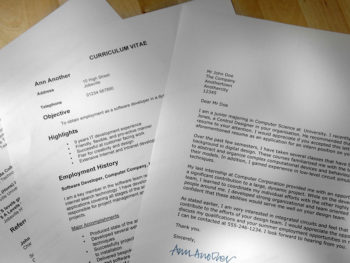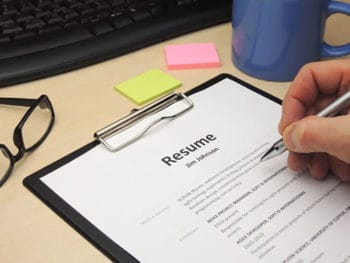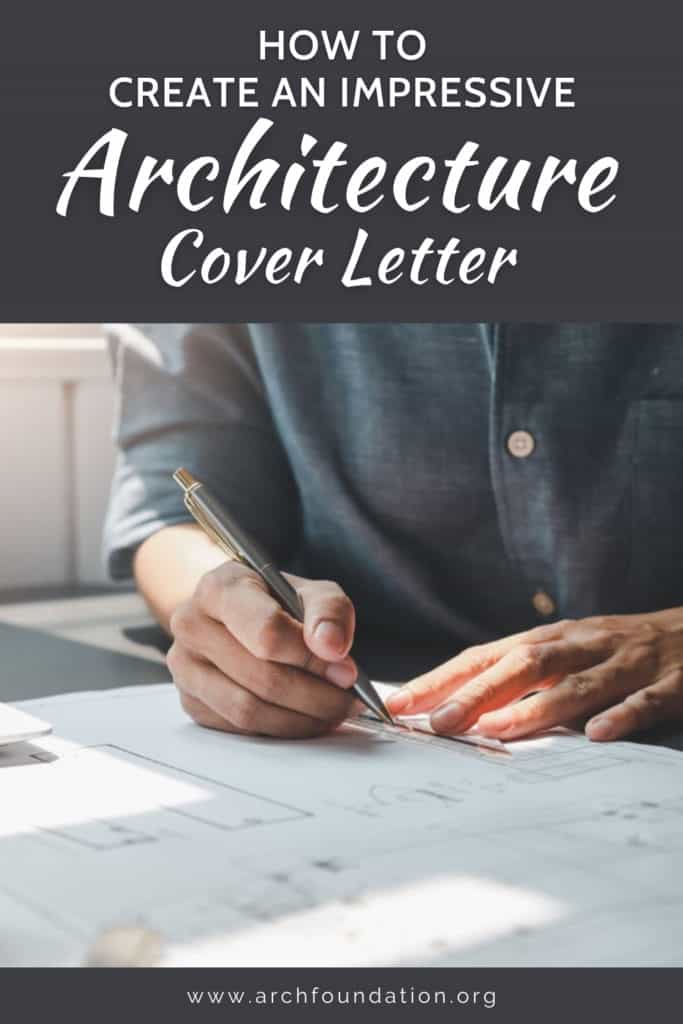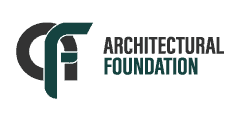How to Create an Impressive Architecture Cover Letter
Architects are magicians who can turn out-of-the-box ideas into a brick and mortar reality. Equipped with aesthetics and design skills, they are uniquely skilled when it comes to researching, planning, and implementing construction projects.
However, these maestros of creation are often found scratching their head when looking to apply formally for new architecture opportunities – as they are required to prepare a cover letter, along with their resume. With writing being not so much their skill forte!
It is important to understand that the job market of today is very competitive. In fact, the recruiters claim that a single job opening attracts around 250 resumes – and the architecture sector is no exception.
Being an architect extraordinaire, you may have the potential to become the next Frank Lloyd Wright or Jean Nouvel, but how do you make the first impression on the hiring managers? How do you prove that you are the best fit for the offered role?
Today, I am going to guide you on how to reach out for your dream job and be heard!
The Solution – A Cover Letter!

In the year 2021, the use of a cover letter may seem to be an optional part of a job application. In fact, you often might be simply skipping it altogether and concentrating more on tweaking your resume for vacancies.
But did you know that:
- 74% of the recruiters prefer job applications that include a cover letter
- A good cover letter is helpful in securing an interview, 83% of the time – even if your curriculum vitae (CV) was not substantial enough!
- A study analyzed employer’s preferences and concluded that 56% of recruiters want job applicants to attach a cover letter along with their resume.
- CareerBuilder found that 49% of hiring managers consider covering letter as the second best thing to improve a candidate’s chances of securing a job – with the first being a customized resume.
Your resume may be there to point out relevant educational and professional details; however, the resume offers a limited overview and is formatted with short and bullet sentences. On the other hand, a cover letter gives the hiring managers a comprehensive insight of your accomplishments.
A good cover letter helps draw attention to your critical skills and previous endeavors. This also shows them your passion for architecture and how serious you are about getting the proposed role in their company. Moreover, the cover letter works as a helpful resource when you have to explain employment gaps in your resume or if you are changing careers.
In this guide, let’s take a look at how to design the perfect cover letter for the next architecture job opportunity!
How to Start Writing the Perfect Cover Letter?
Every cover letter follows a basic template:

- Your name and contact info
- Date of writing the letter
- The architecture agency’s name and their contact details
- An opening greeting (Dear Mr., Mrs., Ms. Contact’s name or Dear Hiring Manager)
- The intro paragraph
- The body paragraph that explains why you are the perfect hire for their architect design agency
- A closing statement with a strong call to action
- A closing (Sincerely, your full name) along with your signature
The Curtain Raiser – Opening Paragraph
- Who are you?
- Why are you contacting me?
- Which job position are you applying for?
These are just some of the questions that run around a potential employer’s mind when they see your CV and cover letter.
And this is your chance to have them notice you, take a look at your resume, and move you to the next step in the hiring process. Focus on the unvoiced questions that are going in the hiring manager’s mind. Focus on answering them in the most clear and concise way possible. Think of the opening paragraph as the unveiling of your new project – all eyes are on you and it’s up to you to make the right impression!
The Act – Middle Paragraph
The next 2 – 3 para of the cover letter works as your ‘good fit’ paragraphs. Here, you can illustrate the skills and qualifications you possess and show how they would integrate to the position you are applying for.
Take pointers from the job description and cover them in your letter. For example, if the architecture agency asks for a candidate with specific technology skills – then make sure to highlight them in your cover letter. If possible, state some numbers or examples to prove your previous accomplishments. Add feedbacks from your past clienteles.
Use this area to mention the soft skills you hold that might not be included in your resume.
Also, you can take this chance to explain the dodgy parts of your resume – such as layoffs, gaps, and resignations. However, only add the points that would keep you in a positive light. And offer only the vital details.
In short – show the recruiters why you are a ‘good fit’ for the job and what can the company gain by hiring you for the role.
The Climax – Closing Paragraph
HR experts say that ‘companies want people who want them.’ This means making the conclusion about the company, rather than yourself.
Some tips for an effective conclusion include:
- Use words like ‘I’ and ‘you’.
- Show your interest towards the firm and the specific role.
- Conclude the letter by stating your contribution goals for the architecture firm.
- Ask the recruiter to go through your resume.
- Seek feedback regarding your job application.
- Be confident and request for an opportunity to discuss your abilities in detail.
- Thank them in advance and state that you are looking forward to meeting them.
Above all, be clear about your intentions and the note with a strong call-to-action.
Here, you may be tempted to write the sentence, ‘looking forward to hearing from you.’ However, this is not a call-to-action that would stand out amidst the multiple job applications received by the company. Instead, entice the recruiter with your enthusiasm that would make them notice you.
Some example conclusion sentences can be:
- I am keen on meeting you
- I would love to hear your thoughts on my ideas for the company
- I am happy to discuss my contribution goals for the company via phone call
The Final Bow – Postscript
A post script or a P.S. is usually added as an afterthought in a letter and may seem unprofessional in a cover letter – but actually it can be a real attention-grabber.
In fact, most readers cannot resist reading a post script. Try adding one in your next cover letter and see how it works!
- I will get back to you by phone on (date) and (time) to discuss my XYZ abilities.
- I look forward to meeting you in person and discuss how I can contribute to your company as a (Job role). Please feel free to contact me at (phone number) to set up an interview.
- I would love to meet you for a coffee and explain how I can utilize my expertise in your company.
Does the Length Matter?
You may be using the cover letter as a detailed version of your resume, but don’t stretch it too long. Hiring managers usually have hundreds of job applications to go through for each vacancy and may get bored if you have sent them lengthy reading material. Ideally, the cover letter should be around 200 – 300 words, spanning over maximum of one page.
What About the Font?
Interestingly, the font you use in your cover letter and resume also make a difference. This is not the place to use creative elements – save them for your next design project. Instead, use the fonts that are clearer and easier to read. It is also important to pick a common font style that the recruiter has readily available on his or her computer.
Some popular styles in MS Word include Times New Roman, Calibri, and Arial while the font size should be around 10 – 11 pts. When drafting your cover letter, make sure to use the same font style for your resume as well. There should be a consistency between both the documents.
If You Are Sending a Cover Letter – Make Sure to Do It Right!
Here are some general tips to follow when writing a cover letter.
No Automation
Although, it may be tempting to use the same cover letter that you used for your last job application, but trust me, the employers want to hear why you are interested in the specific position at their respective company. This means for you to create a customized cover letter for each job you apply for. Of course, you can copy some strong sentences from your previous job application. However, don’t send a generic letter to every employer.
Be to the Point
As I mentioned above, a cover letter should never be lengthy. Provide details, but don’t go overboard with your accomplishments. Avoid superfluous sentences and keep the letter crisp – and clear. Moreover, don’t go beyond a page. Stick to one page with the content spanning over 4 – 5 paragraphs.
Make It Personal
Again, avoid using a generic opening line for every cover letter you send out. Address the hiring person with both – their first and last name. If you don’t know the name, a quick google search can definitely help or call the company directly and ask the name.
This would show the architecture firm your interest with the firm as well as your leadership qualities. Ultimately, if all fails – you can go with a traditional “XYZ Company Hiring Manager”. However, try your best to research the name for a personalized touch.
Add Testimonials
Feedbacks from former employers, colleagues, and clients can go a long way in highlighting your skills and passion for the proposed job. However, don’t go overboard with the testimonials. Add 1 – 2 in the letter to avoid making it overcrowded.
Showcase Your Skills
Newly grads or applicants without previous experience usually use the cover letter to put emphasis on their educational backgrounds. However, the employers can check your educational qualifications with a quick look at your resume. Instead, use this page to showcase the skills you possess – that may be beneficial for the company. Describe the extracurricular activities, which you were a part during your college days. Or highlight your previous internships.
For example, many companies put significant stress on collaborating in teams. Relevant experiences such as working on projects in college, being part of clubs or societies, and sporting events can show the recruiter that you are a team player with valuable leadership, communication, and negotiation skills.
Remember, you are not writing the cover letter to mimic your resume. You are using the time and effort to let the hiring manger know that you have the right foundation to establish your career with their architecture firm.
Demonstrate Your Industry Experience

Besides showing the recruiters your interest in the company, portray your knowledge regarding the know-hows of the architectural sector.
You may be a recently graduated individual and lack professional experience. But you have studied the subject and have the knowledge of how the sector operates as a whole. Demonstrate the same in your cover letter.
Additionally, research about the specific company so you are up-dated with their recent projects and developments.
Sell Yourself
Think of your cover letter as a marketing campaign. You are trying to sell yourself to the relevant company without being salesy. Your aim is to draw attention to the best features of your professional self through this cover letter. Highlight the points that make you unique and the best candidate for the role. Explain why the job is vital for your career and in return – how your skills can give the company success it deserves.
Be Active
Never write a cover letter in a passive tone. A passive voice seems to do nothing – it just seems to sit there, without any action while a present or an active voice shows the responsibility of your achievements and goals. For example, avoid sentences like ‘I would’ or ‘these are the expertise I can offer.’ Instead, replace them with ‘I will’ and show the hiring manager of the vigor you possess.
Check Job Application for Cover Letter Requirements
In many cases, the recruiters specifically ask for a cover letter along with the job applications. However, there are some instances when you are explicitly told not to send one. Online applicant tracking systems also don’t accept cover letters or additional documents.
Double-check the job description and follow the guidelines stated by the hiring personnel.
Proofread, Again and Again
Similar to revising your blueprint, proofread the document thoroughly for any spelling or grammatical errors. Read it multiple times until you are sure it is ‘near-perfect’. Use the spell check integrated in MS Word along with other grammar checking software (available online) to ensure there are no typos and mistakes in your cover letter.
Once you are satisfied, have a friend or a family member go through it to ensure that you have managed to cover all the details. Show them the job description to confirm that you have managed to cover all points.
Don’t Make These Mistakes
Make sure your cover letter is free from these common but avoidable mistakes:

- Be straightforward in your letter and avoid beating around the bush with your opening.
- Simply start your letter by stating the position you are applying for.
- Don’t make it too long – 1 page is enough.
- Avoid using emoticons and casual words like ‘wow’ and ‘lol’. Remember, this is a professional letter, not a text message you are sending to a friend.
- Don’t put too much emphasis on yourself, your achievements, and past accomplishments. Yes, do give details, but don’t make the cover letter sound like an autobiography by writing ‘I can do this’ and ‘I did that.’
- Avoid writing the same information that is present in your resume. For example, your educational qualifications.
- Avoid sharing your weakness or happenings of the past that can create a negative impression of your skills. Instead, use the cover letter to highlight your present scenario.
- Don’t use complicated vocabulary in your attempt to sound ‘smart.’ Use simple words and short sentences for ease of readability.
- Don’t use a non-professional email address such as [email protected]. Make sure to use an email address with your proper first and last name.
- Don’t forget to sign your cover letter.
- Don’t be generic in your cover letter. Customize each letter according to the job description. This shows the potential employer your keen attention to detail.
- Don’t remain dependent on the hiring manager to contact you. Instead, give them a scheduled time when you will be contacting them for feedback.
- Make sure to proofread thoroughly.
- End the letter with a ‘thank you’ to the reader for his or her time and consideration.
How to Submit the Cover Letter?
Now that you have drafted the cover letter, it is time to send it out with your resume and portfolio to the concerned person.
Generally, most job applications are sent out via email. Website submissions are also common while there are some employers who still prefer the traditional hard copy method.
Email Submission
I would reccomend adding your cover letter directly in the body of your email message. This eliminates the burden of attaching another document to your email and saves the employers trouble of downloading the same.
This also increases the possibility of the employer actually reading your cover letter while it may get skipped if sent out as an additional attachment. However, make sure the cover letter is formatted properly in your email body as copy-pasting often changes the formatting of your content.
I would also advise against attaching the cover letter along with resume and portfolio – if any. This may allow the hiring manager to skip one of the either documents, more likely your cover letter and go straight to the resume instead.
Website Submissions
Most large architecture companies allow job application submissions on their websites. Usually, the applicant is required to fill out a form, available on the website with his or her details and attach the resume.
However, some companies also allow attaching PDF documents or integrate a text box, where the interested candidates can write their cover letter.
In these cases, simply follow the instructions as stated on the company’s website.
Mailed Hard Copies
May sound a bit conservative, but yes – there are some companies that prefer candidates mailing hard copies of the resume and cover letter. There are also instances where you may simply want to drop in at the architecture firm and hand out your job application in person.
If that is the case, then have your resume and cover letter printed out on a high-quality, white-colored bond paper. Use a waterproof envelope to minimize any chance of the letter getting wet. And don’t forget to sign the letter by hand, before handing it to the concerned person.
A Little Effort Goes a Long Way
A cover letter may seem like a formality, but it is a great opportunity to create a great first impression. Yes, truthfully not many recruiters read the cover letters. But then again, there are many resumes that don’t get seen or acknowledged.
Take the gamble and craft a killer cover letter that would help you explain the fundamental features you may have missed in your resume. Even if you don’t have much experience working in an architecture firm, a well-written cover letter can be the aid that lands you your perfect job.
So don’t miss out!
Give the cover letter a chance and show the hiring personnel what they can gain with you on board!
Good luck!

